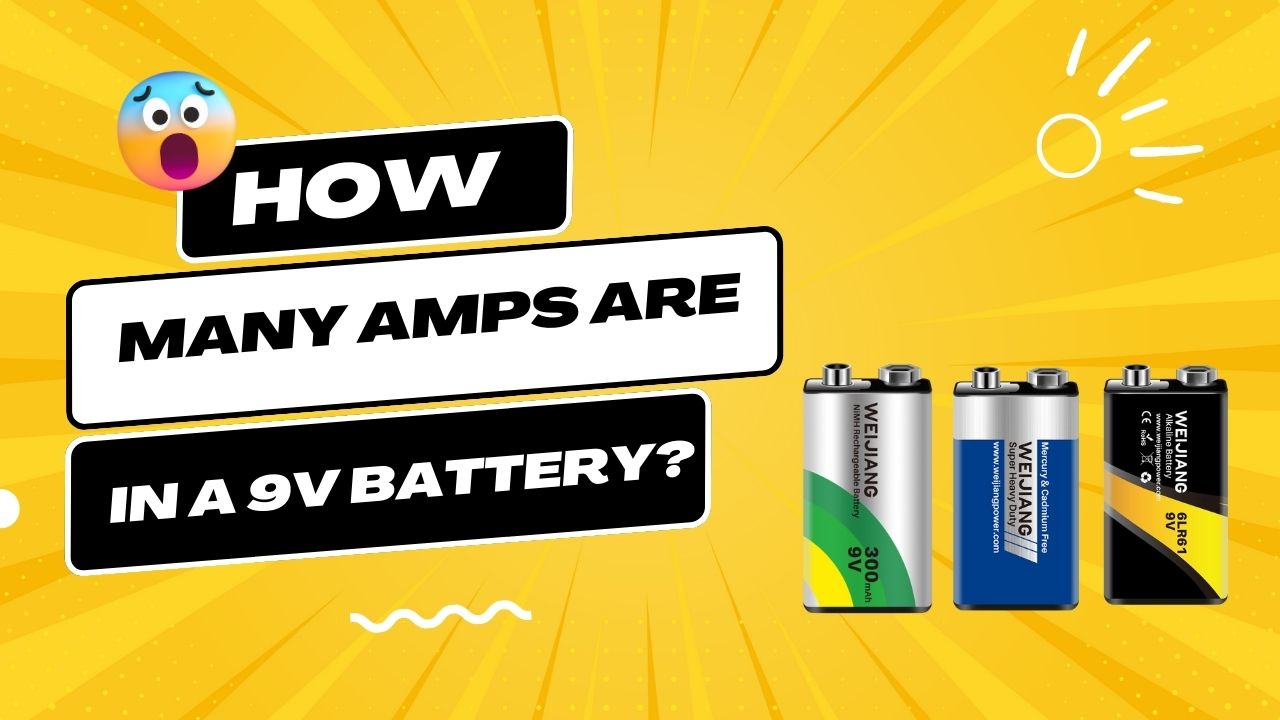When it comes to batteries, it's important to understand the specifications and technical details before making a purchase. One of the critical parameters of a battery is its current, measured in amps. In this article, we'll be discussing how many amps are in a 9V battery, which is a common type of battery used in many electronic devices. We'll also be discussing some of the factors that can affect the current output of a 9V battery.
What is an Ampere?
Firstly, let's understand the term 'ampere'. An ampere (amp) is the unit of electric current in the International System of Units (SI). Named after the French physicist André-Marie Ampère, it measures the flow of electric charges through a conductor. In simple terms, it's akin to the flow rate of water through a pipe.
What is a 9V Battery?
A 9V battery, often colloquially referred to as a 'transistor battery', is a common size of battery that was introduced for the early transistor radios. It has a rectangular prism shape with rounded edges and a snap connector at the top.
These batteries are known for their long shelf life and stable 9-volt power output, making them ideal for low-drain and intermittent-use devices like smoke detectors, clocks, and remote controls. They are also popular in professional audio applications, such as wireless microphones and electric guitars.
How Many Amps are in a 9V Battery?

Now, to the heart of the matter-how many amps are in a 9V battery? It's essential to note that the amount of current (amps) a battery can provide is not fixed. Instead, it depends on two factors: the battery's capacity (measured in milliampere-hours, or mAh) and the load or resistance applied to the battery (measured in ohms).
A 9V battery typically has a capacity ranging from 100 to 600 mAh. If we use Ohm's Law (I = V/R), where I is current, V is voltage, and R is resistance, we can calculate that a 9V battery can theoretically deliver a current of 1 Amp (A) if the resistance is 9 ohms. However, under practical conditions, the actual current may be less due to internal resistance and other factors.
The current output of a 9V battery can vary depending on the battery type and quality of the battery. However, as a general rule, a fresh 9V battery should be able to supply a current of around 500mA (0.5A) for a short period of time. This current output will decrease as the battery discharges, and it's important to note that a 9V battery may not be able to supply enough current for some high-powered devices.
The Capacity of Different 9V Batteries
There are several different types of 9V batteries available on the market, each with its own unique characteristics, capacities and applications.
9V Alkaline Battery: 9V Alkaline batteries are the most common type of 9V battery and are widely available in most stores. They offer a relatively high energy density and are suitable for a wide range of devices. The capacity of a 9V alkaline battery can range from around 400mAh to 650mAh.
9V Lithium Battery: Lithium 9V batteries are known for their long shelf life and high energy density. They are often used in high-drain devices, such as smoke detectors and wireless microphones. The capacity of a 9V lithium battery can range from around 500mAh to 1200mAh.
9V NiCad Battery: NiCad 9V batteries are rechargeable and can be used in a variety of applications, including cordless phones and remote control toys. They have a relatively low capacity and are prone to memory effect. The capacity of a 9V NiCad battery can range from around 150mAh to 300mAh.
9V NiMH Battery: NiMH 9V batteries are also rechargeable and offer a higher capacity than NiCad batteries. They are commonly used in portable audio devices and other low to medium power applications. The capacity of a 9V NiMH battery can range from around 170mAh to 300mAh.
9V Zinc-Carbon Battery: Zinc-carbon 9V batteries are a low-cost option and are suitable for low-drain devices, such as clocks and remote controls. They have a relatively low capacity and are not rechargeable. The capacity of a 9V zinc-carbon battery can range from around 200mAh to 400mAh.
Why is Understanding Amps Important?
Knowing the amps of a battery is crucial because it directly impacts the performance and lifespan of the battery-operated devices. A battery with a higher amp-rating can power a device for a longer period, whereas a battery with a lower amp-rating may need to be replaced more frequently.
Understanding the current also helps in estimating the cost of operation and the return on investment for battery-powered devices, which is a vital consideration in business-to-business transactions.
Choosing the Right Battery
As a leading battery manufacturer in China, Weijiang Power offers a range of 9V batteries with various capacities to meet different business needs. Our batteries are designed with high-quality materials for optimum performance and longer lifespan, providing excellent value for your business.
When choosing a battery, consider the device's power requirements and how long it needs to operate between charges or battery replacements. Also, consider the operating conditions as extreme temperatures can affect battery performance and lifespan.
Our expert team is always ready to assist you in choosing the right battery for your needs, ensuring that you get the best performance and value for your business.
Conclusion
In conclusion, the amount of amps in a 9V battery depends on its capacity and the load applied to it. As a business owner, understanding this concept can help you make informed purchasing decisions and optimize the performance and cost-effectiveness of your battery-operated devices.
Contact us today for more information on our high-quality 9V batteries and let us power your business towards success.
Post time: Jul-26-2023





